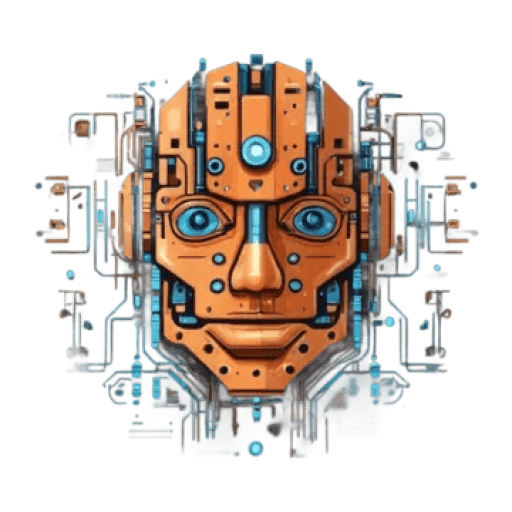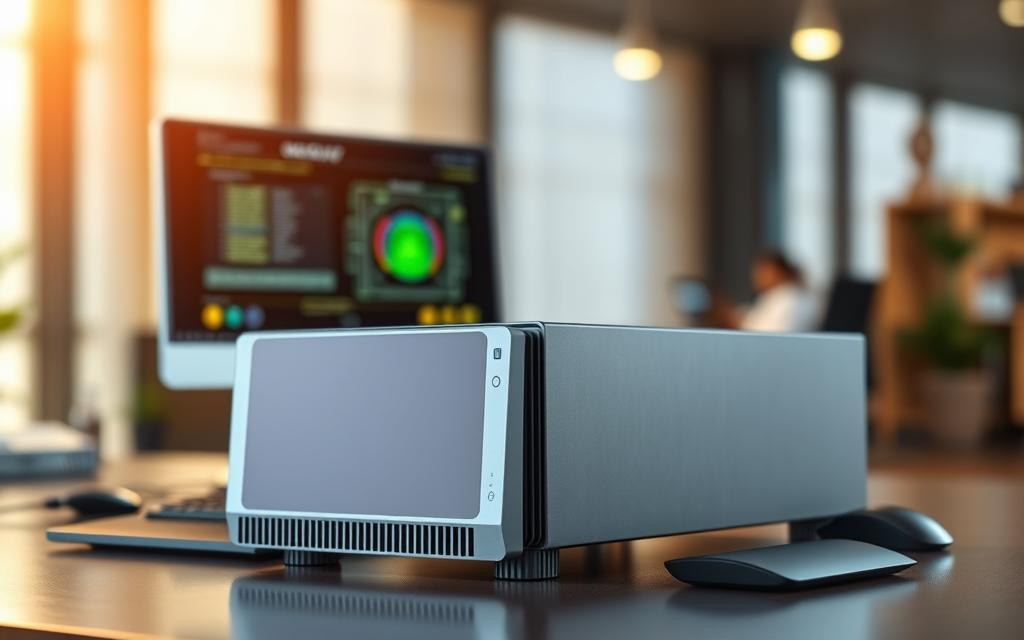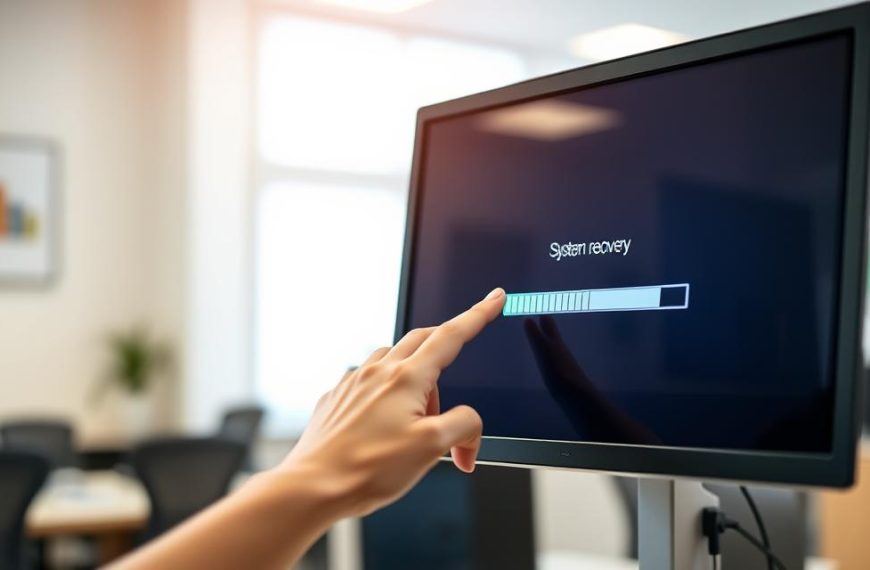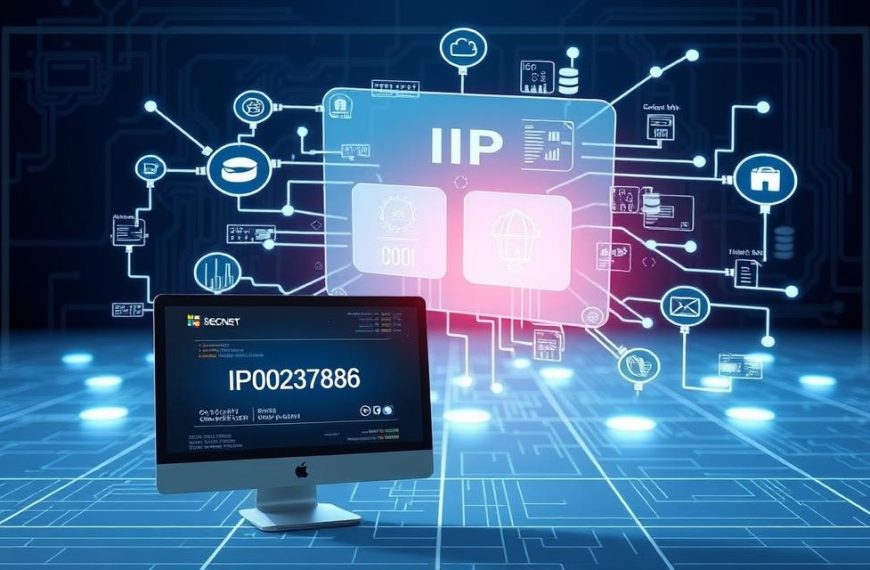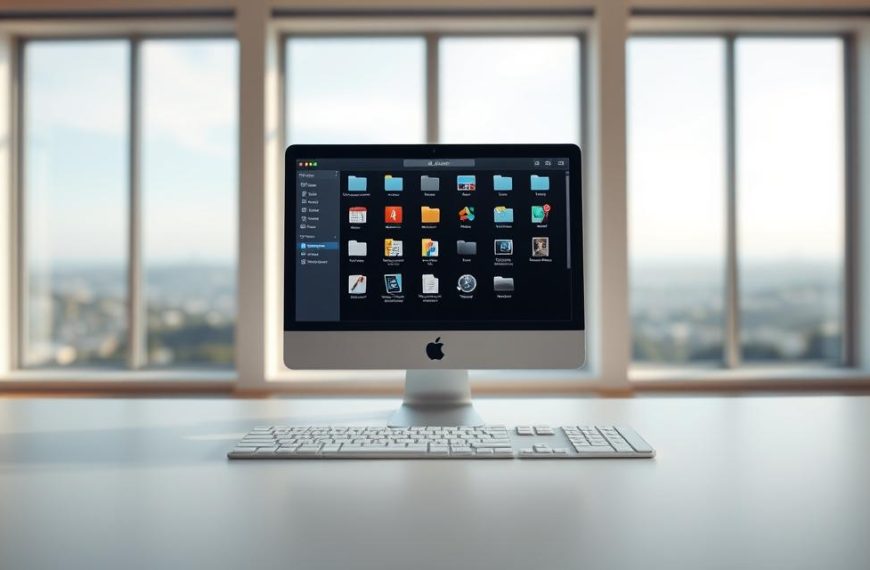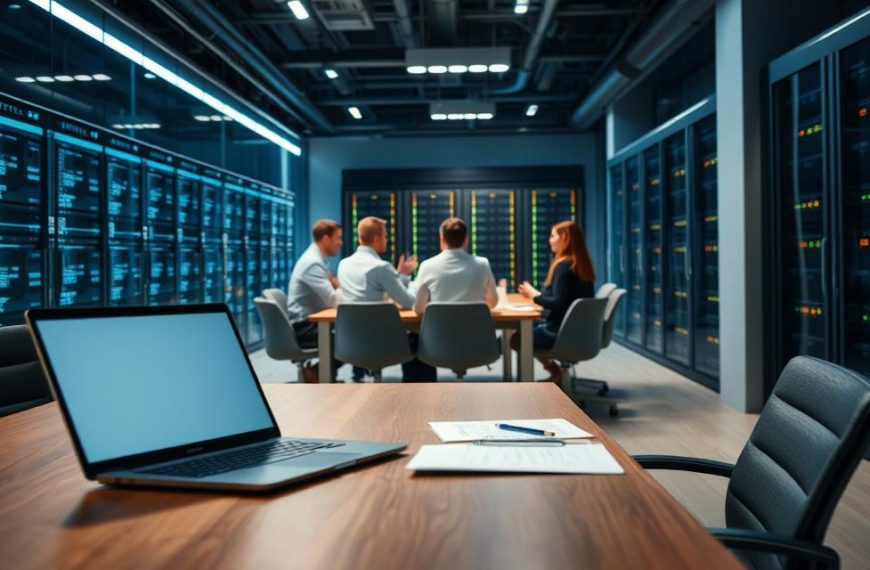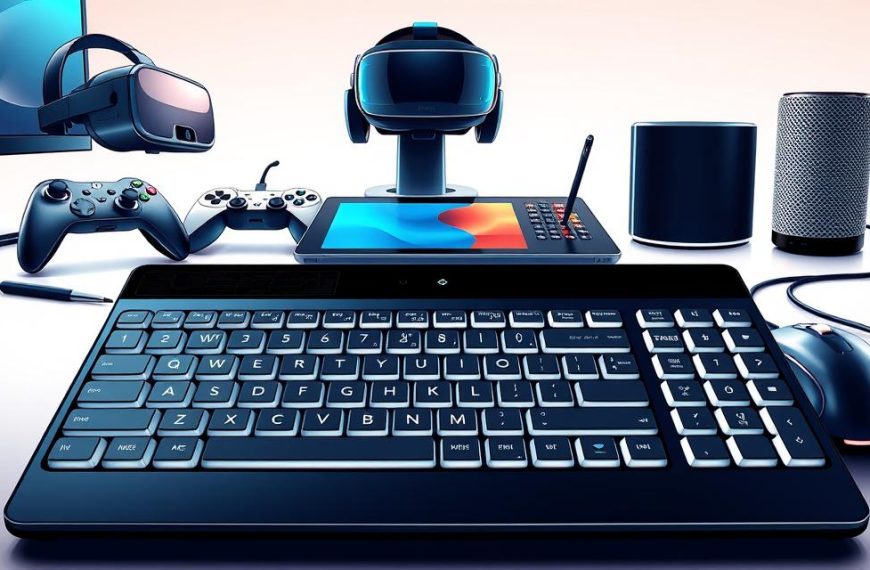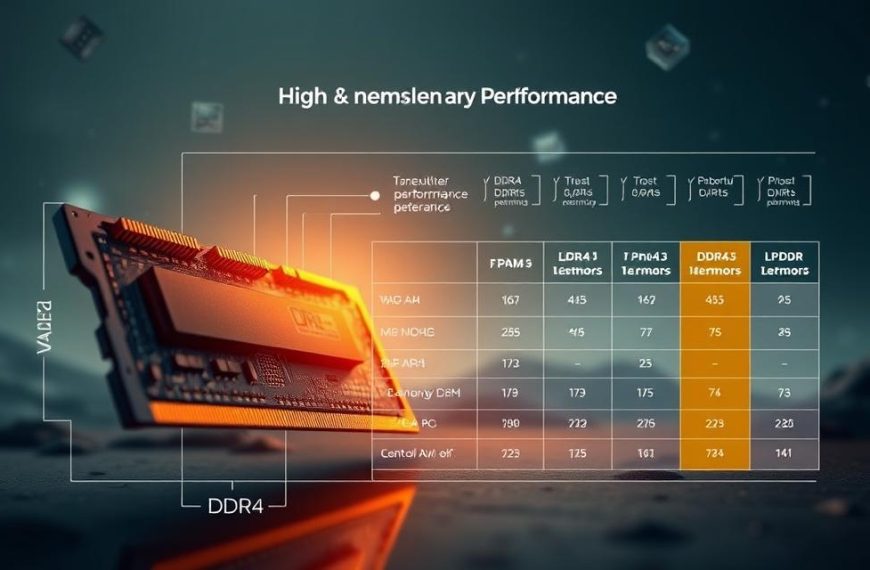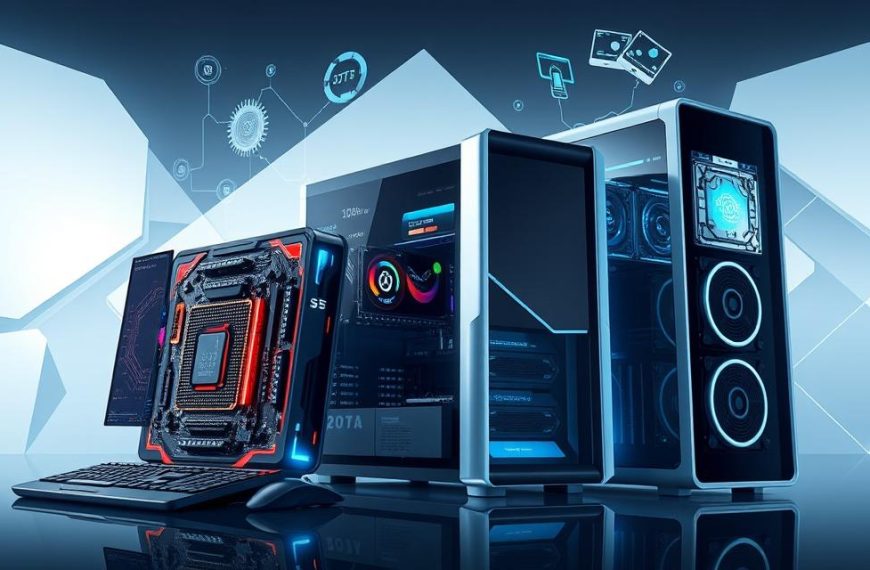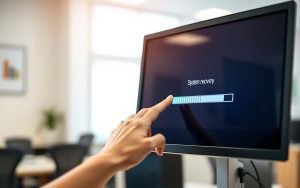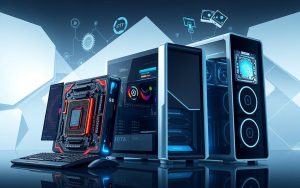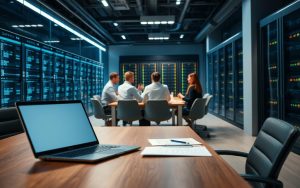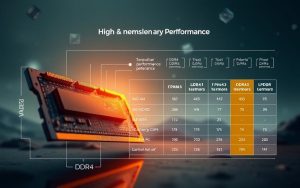A general purpose computer is the most flexible type of digital device. It’s different from special equipment that only does one thing. These systems can adapt to many tasks.
This flexibility is key to modern computing. With programmable instructions and various software, one machine can do many things. It’s a powerful tool.
The computer system versatility is its greatest strength. It can handle everything from complex math to creative projects. It does all tasks well.
This idea of multipurpose computing sets general systems apart from dedicated hardware. It’s what makes them essential in all areas of life and work.
Knowing what a general purpose computer is helps us see how technology meets our changing needs. These systems are the heart of our digital lives.
What Is a General Purpose Computer System
General purpose computer systems are the heart of modern computing. They are much more flexible than devices made for just one task. These machines are key to our digital lives, from personal computers to big business systems.
Defining the Core Concept
A general-purpose computer can do many tasks. It needs the right software and enough time to do so. Unlike devices made for one job, these computers change through software, not hardware.
Examples include desktops, laptops, smartphones, and tablets. They can all run different programs, from writing to complex data analysis. This makes them vital in many fields and industries.
Historical Context and Evolution
The story of general-purpose computing started with huge machines like ENIAC. Built in the 1940s, ENIAC was massive, weighing 30 tons and taking up 1,800 square feet.
This early computing evolution shows how far we’ve come. From huge machines to small devices, it’s a remarkable change. ENIAC’s history began a revolution that made powerful computing accessible to all.
Key Characteristics That Define General Purpose Systems
Several key computer characteristics set these systems apart. The most important is programmability. This lets users change software without changing the hardware.
Other key features include:
- Adaptability to different tasks through software changes
- Multi-tasking capabilities for simultaneous operations
- Expandable memory and storage options
- Standardised input/output interfaces
These core computer characteristics make general-purpose systems incredibly versatile. They help with everything from science to creative projects. These machines keep evolving to meet new computing needs.
Fundamental Components of General Purpose Computers
Every general purpose computer has a complex architecture. It includes several key hardware parts. These parts work together to process information, store data, and communicate with users and other systems. Understanding these components shows how computers are so versatile in many applications.
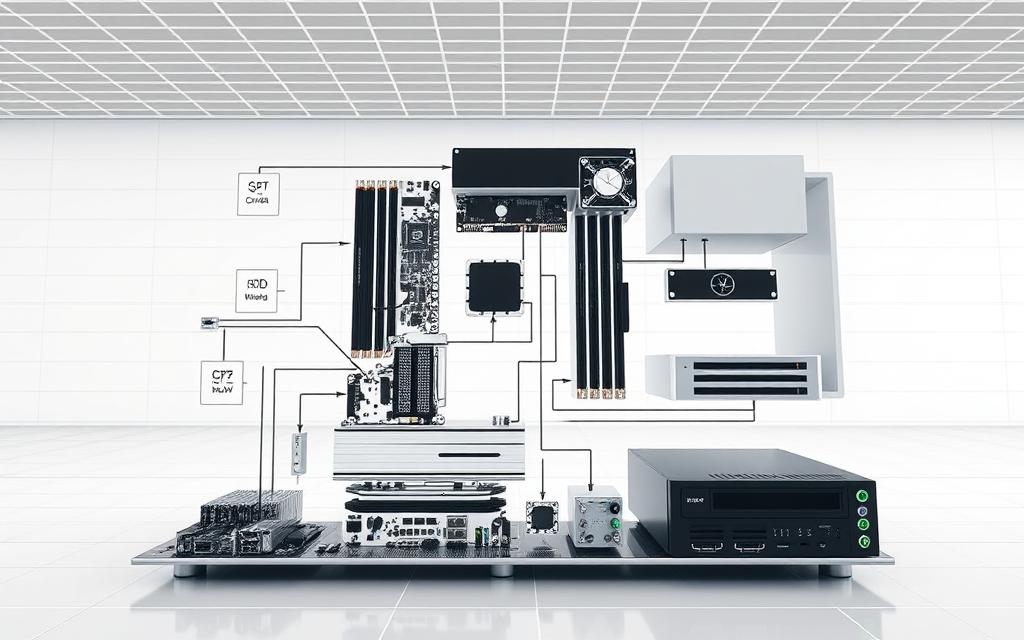
Central Processing Unit: The Brain of the System
The Central Processing Unit is the computer’s brain. It executes instructions and does math at super-fast speeds. Modern CPUs have billions of transistors in multiple cores, allowing them to handle many tasks at once.
The CPU’s components work together. The control unit manages instructions, and the arithmetic logic unit does math. Registers store data temporarily for quick calculations. The CPU’s speed, measured in gigahertz, shows how many operations it can do each second.
Memory Systems: RAM and Storage Solutions
Computer memory systems have two main types: temporary and permanent. Random Access Memory (RAM) is for active programs and data. It clears when power is turned off.
Storage solutions keep data safe long-term. Hard disk drives and solid-state drives are examples. They store operating systems, applications, and files even when the computer is off.
Input/Output Devices: Connecting with the World
Input output devices connect users to computers. They let information flow in both directions. This variety makes computers useful in many ways.
Common Input Devices and Their Functions
Keyboards are the main way to type. Mice and touchpads control the cursor. Scanners turn physical documents into digital ones. Microphones record sound.
Essential Output Devices and Their Roles
Monitors show visual information. Printers make physical copies of digital documents. Speakers play sound for music and alerts. Each device has a specific role in communication.
These components—processing power, memory, and connection—make computers versatile. They can be changed through software to do almost any task. This is what makes general purpose computing so adaptable.
The Versatility Principle: How General Purpose Systems Adapt
Modern computing flexibility comes from old architectural choices. These choices help today’s diverse applications. General purpose systems become special tools through several key ways.
Software-Driven Flexibility
The von Neumann architecture is the base of how general-purpose computers work. It lets software be installed, updated, and removed easily. This software flexibility means the same hardware can do different tasks by changing apps.
Users can change their system’s function without physical changes. This lets businesses use old hardware for new tasks as needs change.
Hardware Expandability and Customisation
General purpose computers support a lot of hardware customisation. They have expansion slots, ports, and upgradeable parts. This modular design lets users add what they need.
Adding special graphics cards for design or more memory for data analysis is easy. This makes systems grow with user needs, extending their life.
Multi-tasking and Multi-user Capabilities
Modern multitasking systems handle many tasks at once. They do this without losing performance. This lets one machine do many things at the same time.
Multi-user support lets different people use the same hardware in their own way. This is great in schools and businesses where sharing resources saves time.
Operating Systems: The Foundation of Versatility
Operating systems manage hardware and let apps run. They make complex hardware easy for apps to use. This makes software work on different hardware.
This layer is key to computing’s versatility, as shown in architectural studies.
Application Software: Enabling Diverse Functions
Application software turns general purpose hardware into special tools. From word processors to scientific simulations, these programs use hardware for specific tasks.
The growing library of apps makes these systems stay relevant. They adapt to new technologies.
Real-World Applications Across Industries
General purpose systems are used everywhere, from offices to labs. They become special tools with software and devices. This makes them useful in many areas, keeping their basic design.
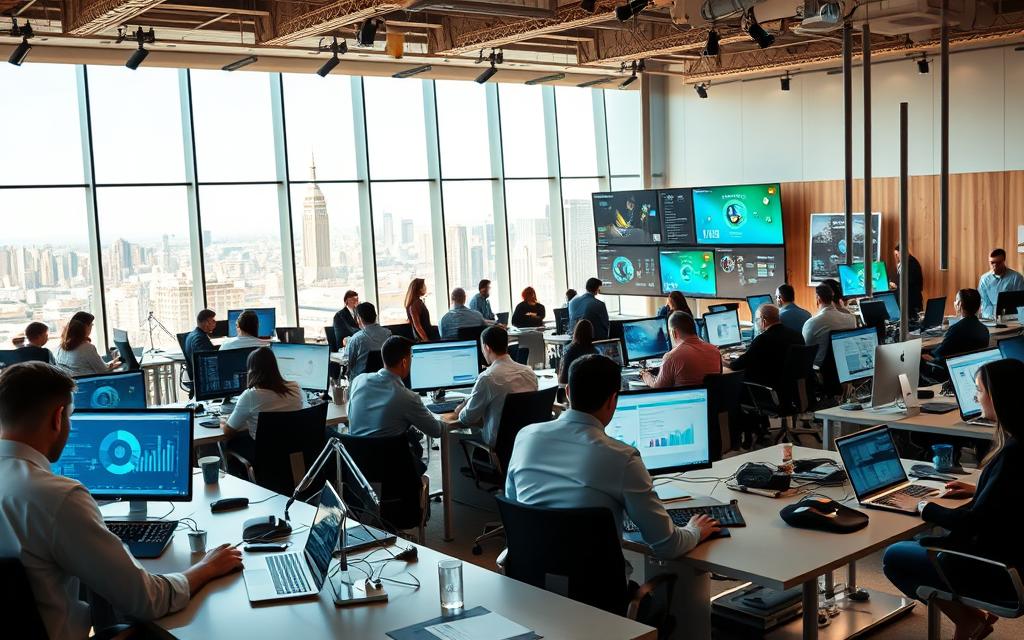
Business and Office Environments
Today’s businesses use computers for daily tasks. Desktops and laptops are key in offices, handling documents and data.
They run business computing applications like CRM and accounting. This lets companies tailor their digital space to fit their needs.
Case Study: Desktop Computers in Modern Workplaces
A big bank updated 5,000 desktops. This boosted productivity by 27% in six months. Workers found it easier to multitask and process data faster.
“General purpose systems provide the perfect balance between standardisation and customisation for corporate environments.”
Scientific Research and Data Analysis
Science labs use computers for big calculations and data work. These systems handle large amounts of data better than special tools.
Modern scientific research computers do simulations and analysis in fields like genomics and astrophysics. They can change to meet new research needs.
Creative Industries: Design and Media Production
Creative people use computers for design and video editing. These systems run complex software, turning them into powerful tools.
They handle big files and complex tasks. This makes them key in advertising, film, and design worldwide.
Education and Personal Computing
Schools and universities use computers as teaching tools. They help with learning and getting tech skills.
With educational technology, classrooms become interactive. Students use computers for projects and learning resources.
Case Study: Laptops in Educational Settings
A university gave laptops to all new students. This led to a 40% rise in digital assignments and better project work.
| Industry Sector | Primary Applications | Common System Types | Key Benefits |
|---|---|---|---|
| Business & Finance | Data processing, communication, analytics | Desktop workstations, laptops | Customisable software solutions |
| Scientific Research | Simulations, data analysis, modelling | High-performance workstations | Adaptable to changing research needs |
| Creative Industries | Design, video editing, content creation | Specialised workstations | Handles resource-intensive applications |
| Education | Learning platforms, research, collaboration | Laptops, tablets, desktop computers | Supports interactive learning |
General purpose computers are versatile and stay relevant in many fields. As tech improves, these systems adapt to new needs while keeping their core purpose.
Embracing Versatility in Modern Computing
General purpose computers are incredibly flexible. They can handle everything from office work to creative projects. Their ability to be upgraded and connected is a big plus, making them vital in our digital lives.
These systems can change with new software and hardware. They support many tasks across different fields. This makes them essential for multi-tasking in various industries.
But, general purpose computers have their downsides. They can cause eye strain and pose security risks. There are also privacy concerns to consider.
Their production and disposal harm the environment. This shows we need to focus on sustainable practices.
The future of general purpose computing is bright. Advances in efficiency and integration are on the horizon. As TechTarget explains, these systems will keep evolving. They will balance flexibility with specialisation, driving innovation in business, science, and our daily lives.
